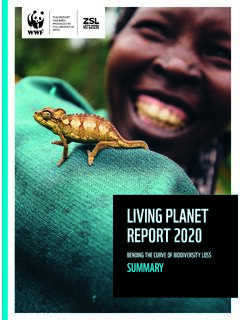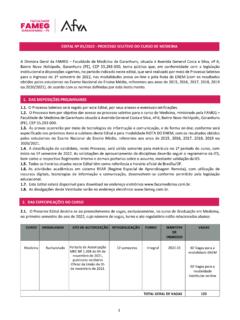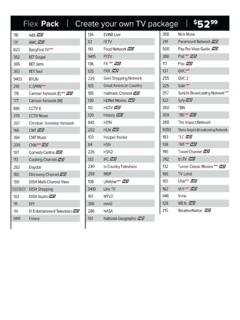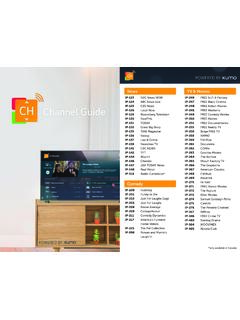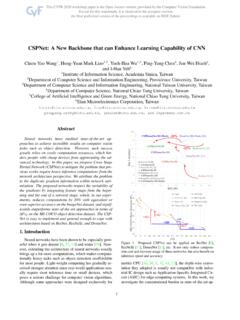Transcription of Video 1: Introduction – Content: The Backbone of your ...
1 Transcript: Lesson Three Building a Content Strategy Video 1: Introduction Content: The Backbone of your Social Strategy Let s talk about content strategy for social media. Social media is nothing without the content that makes it interesting for its users. Content truly is the Backbone for all of the other activities that make up your social media plan. And having great content can make all the difference when it comes to having the best reach and engagement for your brand, which helps you build more loyalty and drive more sales. Nicole Votolato Montgomery, Associate Professor of Marketing at the McIntire School of Commerce, University of Virginia Marketers now have less than three seconds to grab attention.
2 And the reason is because we are constantly scrolling through content. And so, consumers are making decisions in a matter of seconds whether or not they want to stay with a piece of content and engage or continue to scroll and move on to the next piece of content. So, it's our job as social media marketers to try to engage them and grab their attention so that we go from this to thumb stopping. If you ve been marketing for a while, chances are you have a content strategy in place already that includes things like your email newsletter, blog posts, your website, and downloadable content like ebooks. Social content is different.
3 It usually serves as the vehicle to get people to those longer pieces of content or, to provide smaller, digestible bits of information that help expose your brand and your values to customers and prospects. The biggest difference between social content and traditional forms of content is that social content can be read and watched in the places and times that people choose. There are three main reasons why people use social media: They want to be informed, entertained, and connected. Social media helps people feel informed by helping them learn new things, stay up-to-date on topics that matter to them, and discover new ideas and trends.
4 And although they are concerned about accuracy of news found online, two-thirds of Americans get their news from social media sites like Facebook, Twitter, LinkedIn, YouTube and others. Social media helps people feel entertained by helping them find and keep up with entertainers, shows, and performances and share and consume entertaining articles and videos. It s no wonder there s such an emphasis on Video content on social: entertainment and Video are key to keeping users engaged. Transcript: Lesson Three Building a Content Strategy Social media helps people feel connected by removing many of typical barriers of communication and allowing people to contact anyone in their personal or professional networks whenever, and from wherever.
5 Social media helps people share, comment, and take part in a global conversation that goes beyond just the people they re friends with. It s up to you to determine which type of interaction your audience is looking for, and how you ll provide it to them through the content you create. Video 2: Social Media Content: The Basics At HubSpot Academy, we talk a lot about content and about finding ways to give value to your audience on an ongoing basis through meaningful content. I m sure you ve heard the phrase that content is king. But in the world of social media, there are really two main things that matter: the content, and how individuals on the network interact with that content.
6 There are a number of different types of content specific to social media, many of which can be used on a variety of channels. Let s break it all down. Text used to be the mainstay of social media. Twitter, Facebook, and LinkedIn were pretty text-heavy channels. But in recent years, they ve shifted to becoming much more visual. In fact, Cisco reports that globally, consumer Internet Video traffic will make up 82% of consumer Internet traffic by 2022, up from 73% in 2017. Think about that for a second, and think about how much Video you re doing already. Visual images include photos, infographics, animated GIFs, and illustrations.
7 These days, you really only need a smartphone camera to take great photos. The possibilities are limitless. Product shots, office and team highlights, conference selfies, customer spotlights, and more. You can share more than a single photo in many cases. For example, on Facebook and Instagram, you can create galleries and use photo carousels. Twitter also allows for multiple photo uploads per post. Animated GIFs can take you one step beyond standard images. They can also help you demonstrate complex concepts quickly and easily, as in this example from SAP in which they explain how AI will change the world. Jacqueline Babb, Associate Professor and Chair of Marketing, Aurora University The upside of gifs is that they're visual content.
8 They're highly shareable and searchable. NASA actually uses gifs on their website to show weather patterns, so there's definitely a time and a place for gifs, but if your users aren't using gifs and if you're using gifs just to get a click-through rate, Transcript: Lesson Three Building a Content Strategy that's probably not the right reason to be using them. So be really intentional about using gifs to communicate a message and tell a story. You can make animated GIFs in Photoshop or online at a variety sites. is the most popular. Video is the next big content bucket to consider. Did you know that marketers who use Video grow revenue 49% faster than non- Video users?
9 Or that 59% of executives agree that if both text and Video are available on the same topic, they are more likely to choose Video ? Chad Rogers, Co-Founder and CRO, Lemonlight There is no better way to reach your customers, whether you have a service or a product, than Video . You can speak to them in so many different ways. You can speak them directly to the camera like we're doing right now. You can educate them. You can entertain them. You can tell them stories. You can convey emotions like no other medium. Video is the only way to go. Video can be used on every single social media site that I ve mentioned.
10 In short, you shouldn t ignore it. Live Video is also becoming more common, and you can broadcast instantly from Instagram, Facebook, Periscope (which is owned by Twitter), YouTube, and a variety of channels such as Livestream. Video is not always cheap or easy to create, but you would be surprised at how often it is. Consumers appreciate brands being authentic on Video , and sometimes that s easier with a smartphone camera than it is with an entire studio. Ai Addyson-Zhang, Founder of Classroom Without Walls Live Video is really, really important, and because we are doing businesses with other human beings, and live Video really showcase the personality of a brand, and the best part of live Video is live Video gives our audiences lots of agency to co-create content with a brand.
